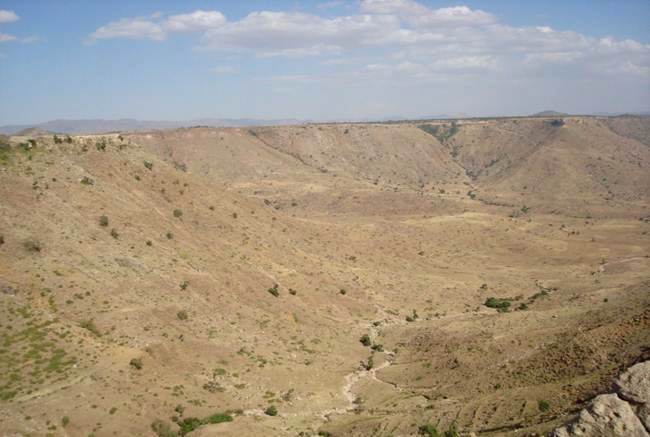
Abreha Atsbeha – a community restores a landscape
May 22, 2012
The destruction of Ethiopia’s forests escalated after the Sahel-wide famines of 1974 and 1984. Total crop failures meant that vast numbers of people were faced with the choice of migrating to major cities/other countries; or to sell the wood of their forests to feed their families. This accelerated a vicious cycle where denuded hills were unprotected from tropical rainfall and became less able to absorb rain, ground water reserves failed to refill and flash floods washed away valuable farmland and caused gullies through farm and town alike. Each year the land became less able to feed those who depended upon it. Abreha Atsbeha before restoration A flash flood damages farm land as rainwater runs unchecked from denuded hills.
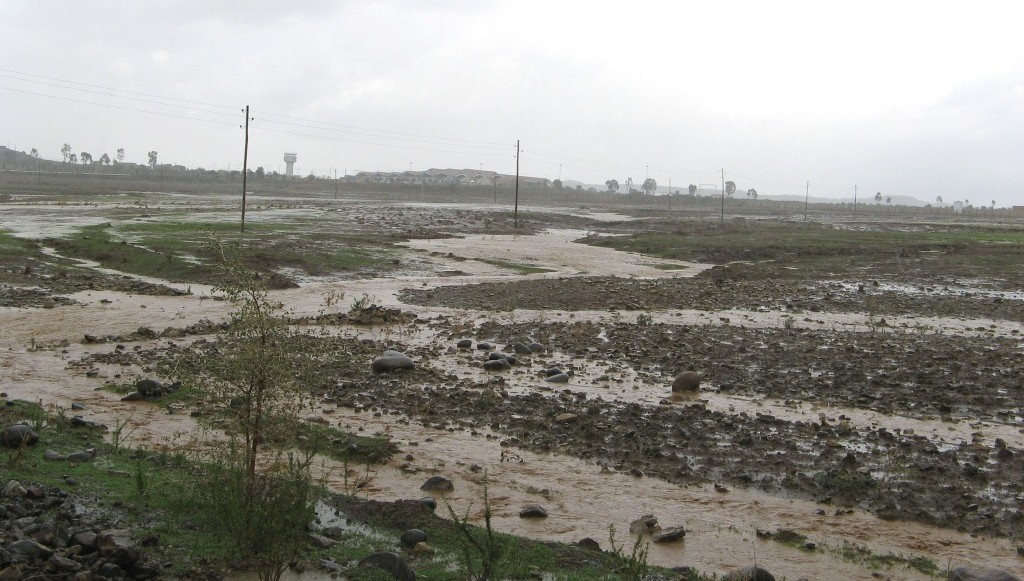
The community of Abreha Atsbeha, in Northern Ethiopia, had experienced recurrent crop failure and had received relief assistance for many years. In the 90s, they faced a terrible choice. The government asked them to relocate rather than depend on aid year after year. How could they leave the land they loved, the land of their forefathers?
There was another alternative, and that was to restore their land to its former productivity. Aba Hawi challenged his community to work to restore their hills and farmland. They worked on three interconnected interventions: soil erosion control, water harvesting and closing the hills to livestock and to wood harvesting.
The effort that this community has expended on erosion control measures is absolutely astounding. They initially built hundreds of kilometres of soil and stone bunds to slow the flow of water down hills.
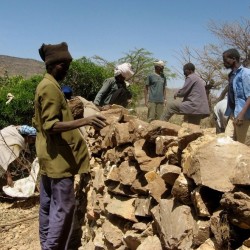
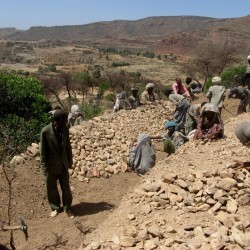
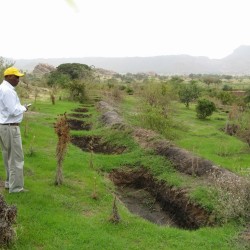
Each family dug a 4m X 4m pond to conserve water. In small gullies, the community constructed stone and trench bunds to slow the flow of water and chains of ponds to trap water. In the river, they constructed nine check dams. The first three catch silt and the last six hold water that allows 80% of the community to irrigate crops in the dry season from 650 hand dug wells. Everyone understands that they are banking water in the dry season – in the soil, the ponds, the check dams and the water table

It took about 10 years to convince the whole community of the value of closing their hills to livestock and to wood harvesting but they are now united in their resolve to conserve their natural resources in order to have healthy and productive farmland.
The community has amazing commitment and understanding but they have not turned their situation around without outside assistance.The Ethiopian Government has enabling policies such as the one that requires every able-bodied, adult rural Ethiopian to give 40 days/year to development of community assets such as the soil and stone bunds, the chains of ponds and the check dams. Abreha Atsbeha families contribute at least another 40 days/year voluntarily.
Families whose income is less than Birr18,000 (about US$1000) above subsistence level participate in the Productive Safety Net Programme under which they receive food or cash for work performed on community assets. District meetings determine the priorities periodically. The aim is for those receiving the assistance to graduate from poverty. The managing committees of the Abreha Atsbeha community have utilised these programs to organise themselves, under the dynamic leadership of Aba Hawi, to restore their land.
Assistance has come from the World Food Programme, the Relief Society of Tigray, the University of Mekelle, the Tigray Agricultural Research Institute, AusAID, World Vision and other organisations. To complement the above changes, households planted woodlots of eucalyptus and grevillea (Silky Oak) to provide firewood and building materials; adopted the use of fuel-saving cookstoves to reduce the consumption of firewood; and participated in the government scheme to improve dairy cattle by artificial insemination so that only one dairy cow is needed, instead of ten, to provide the same amount of milk.
Introduction of modern beehives enables households to earn additional income from the unique white, organic honey produced from the local shrubs. A market chain has been established so that the honey can be sold to Europe at premium prices.
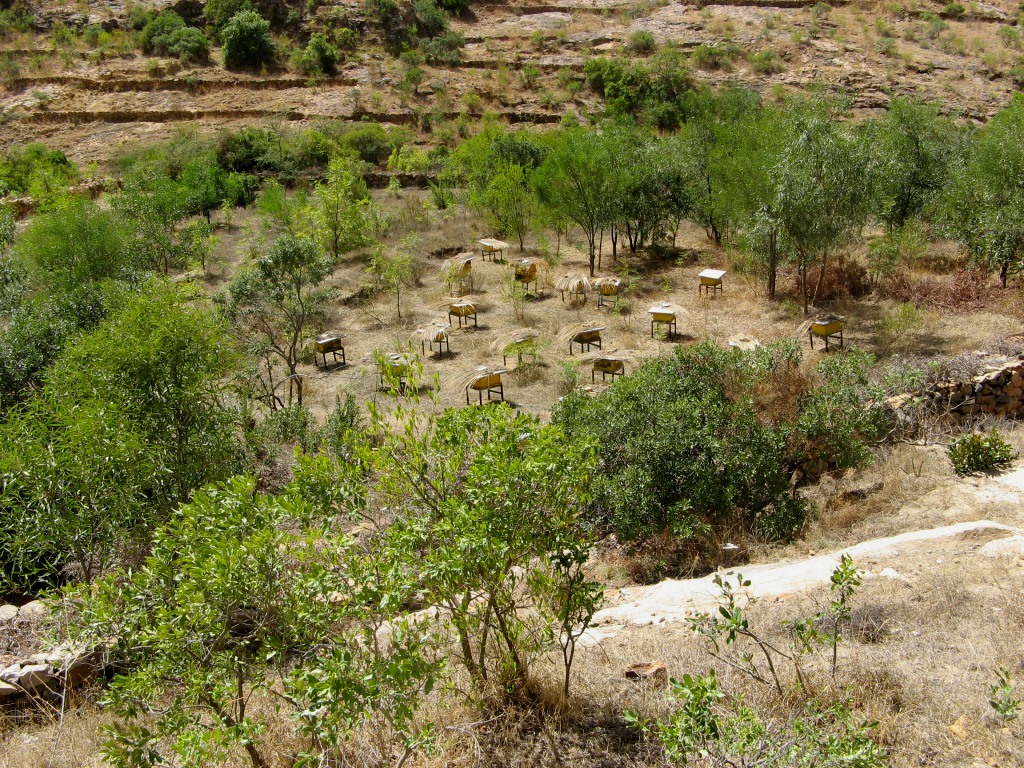
Government, community, UN Agencies, NGOS, universities and research stations have all contributed to the successes seen in Abreha Atsbeha. However the mobilisation of the community under dynamic and committed leadership has been a key contributor to the extent and sustainability of the change.
Until next time
Liz
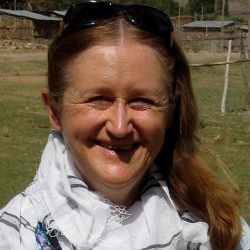
Liz is travelling in Africa with her husband Tony Rinaudo, a natural resource management advisor with World Vision Australia, encouraging communities, non-government organisations, governments, research organisations and others to scale up reforestation over large areas.

